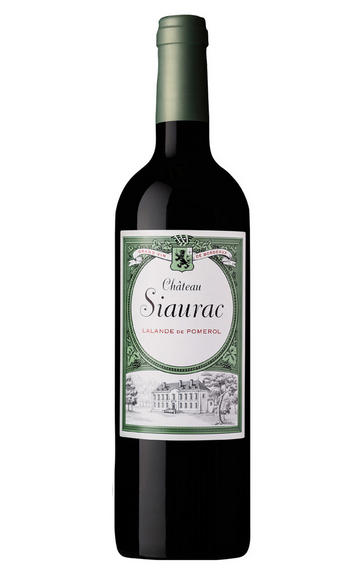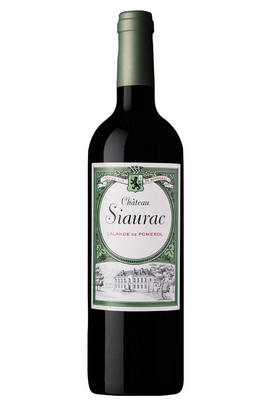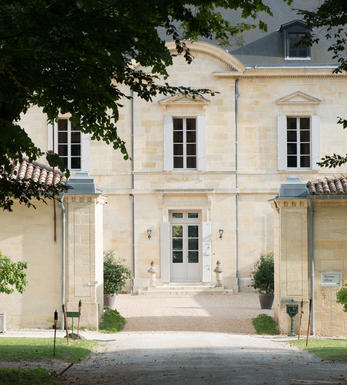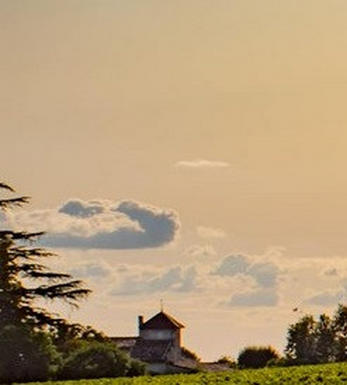
2016 Château Siaurac, Lalande de Pomerol, Bordeaux

Critics reviews
The 2016 Siaurac is silky, perfumed and exceptionally beautiful. Readers will find a restrained Lalande de Pomerol built on finesse and class. Sweet tobacco, menthol, licorice and pretty herbal notes add shades of complexity throughout.
Drink 2018 - 2026
Antonio Galloni, Vinous.com (January 2019)
Bright flowers and attractive red berries on offer here with a really succulent, velvety palate that offers rich red-plum flavors. Long and juicy resolve. A blend of 74 per cent merlot, 19 per cent cabernet franc and seven per cent malbec.
Try from 2021
James Suckling, JamesSuckling.com (January 2019)
The 2016 is naturally a little more subdued but there's an aromatic complexity with earthy, dark fruit notes. The palate is juicy and fresh with good persistence, the tannic frame powerful but the tannins finely honed. This is clearly a wine for ageing and will reward a little patience. The 'best value' pick.
Drink 2023 - 2036
James Lawther MW, Decanter.com (July 2021)
About this WINE

Château Siaurac
Château Siaurac is situated in the Lalande-de-Pomerol appellation of Bordeaux, which is known for producing high-quality wines often compared to those of its more famous neighbor, Pomerol. The estate has been making wine for generations and boasts approximately 46 hectares of vineyards, primarily planted with Merlot, Cabernet Franc, and Cabernet Sauvignon grape varieties. Merlot dominates the plantings, typical for this region and contributes to the wine’s supple and fruity character.
Château Siaurac’s flagship wine is typically a Bordeaux blend dominated by Merlot. The estate also produces a second wine, often called a “second vin,” which may include grapes from younger vines or different vineyard parcels. Like many Bordeaux estates, Château Siaurac emphasizes the importance of terroir, the unique combination of soil, climate, and vineyard practices that influence the character of the wine. The winemaking process involves traditional methods, including fermentation in stainless steel or oak tanks and aging in French oak barrels.
The wines are often described as elegant and well-structured, focusing on ripe fruit flavors, refined tannins, and a harmonious balance. They typically exhibit the classic Bordeaux characteristics of blackcurrant, plum, cherry, and subtle oak influences.

Lalande-de-Pomerol
Lalande-de-Pomerol is situated on the right bank of the Dordogne River, just northeast of Bordeaux. It is known for producing high-quality red wines, primarily made from Merlot grapes, that share many characteristics with the more famous neighbouring appellation of Pomerol.
The appellation covers approximately 1,200 hectares (about 3,000 acres) of vineyards, predominantly planted with red grape varieties, with Merlot being the dominant grape. Cabernet Franc and Cabernet Sauvignon are grown to a lesser extent.
The appellation shares a similar terroir (combination of soil, climate, and environmental factors) with Pomerol, famous for its clay and gravel soils. These soils are ideal for Merlot grapes and are known for their approachability and finesse. They often display characteristics of ripe dark fruits, such as plum and blackberry, along with soft tannins.
Winemakers in Lalande-de-Pomerol often use traditional Bordeaux winemaking techniques, including fermentation in stainless steel or oak tanks and aging in French oak barrels. This approach allows the wines to develop complexity and structure.
Like many Bordeaux appellations, Lalande-de-Pomerol estates may produce second wines, often called “second vins.” These wines are typically made from grapes from younger vines or different parcels within the vineyard. They offer a more accessible and affordable entry into the estate’s winemaking style.
Lalande-de-Pomerol is often compared to its more prestigious neighbor, Pomerol. While Pomerol is known for producing some of the most sought-after and expensive wines in Bordeaux, Lalande-de-Pomerol offers a more approachable price point while still delivering quality wines that share many of the characteristics of Pomerol wines.

Cabernet Sauvignon Blend
Cabernet Sauvignon lends itself particularly well in blends with Merlot. This is actually the archetypal Bordeaux blend, though in different proportions in the sub-regions and sometimes topped up with Cabernet Franc, Malbec, and Petit Verdot.
In the Médoc and Graves the percentage of Cabernet Sauvignon in the blend can range from 95% (Mouton-Rothschild) to as low as 40%. It is particularly suited to the dry, warm, free- draining, gravel-rich soils and is responsible for the redolent cassis characteristics as well as the depth of colour, tannic structure and pronounced acidity of Médoc wines. However 100% Cabernet Sauvignon wines can be slightly hollow-tasting in the middle palate and Merlot with its generous, fleshy fruit flavours acts as a perfect foil by filling in this cavity.
In St-Emilion and Pomerol, the blends are Merlot dominated as Cabernet Sauvignon can struggle to ripen there - when it is included, it adds structure and body to the wine. Sassicaia is the most famous Bordeaux blend in Italy and has spawned many imitations, whereby the blend is now firmly established in the New World and particularly in California and Australia.


Buying options
Add to wishlist
Description
Though frequently overlooked, Lalande-de-Pomerol extends across the famous Pomerol plateau, benefitting from similar topography and terroir. The 2016 Château Siaurac is 74% Merlot, 19% Cabernet Franc and 7% Malbec.
The nose is bright and perfumed, dominated by wild berries but with a raspberry-leaf and cedar-spice lift. The palate is juicy and plump, with fresh brambles, black cherries and damsons, supported by a core of silky tannins. Smooth, elegant and balanced, this is drinking beautifully now but could be laid down.
Drink now to 2028
Georgina Haacke, Wine Buyer, Berry Bros. & Rudd (May 2022)
wine at a glance
Delivery and quality guarantee